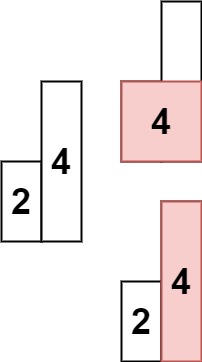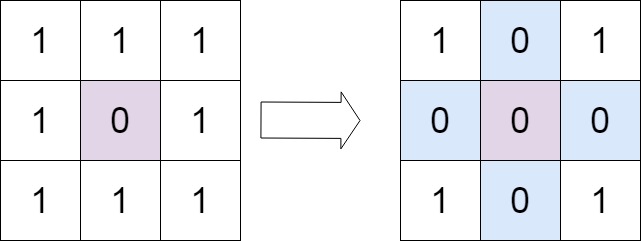Given a
rows x cols binary matrix filled with 0‘s and 1‘s, find the largest rectangle containing only 1‘s and return its area.Example 1:

Input: matrix = [[“1”,”0”,”1”,”0”,”0”],[“1”,”0”,”1”,”1”,”1”],[“1”,”1”,”1”,”1”,”1”],[“1”,”0”,”0”,”1”,”0”]]
Output: 6
Explanation: The maximal rectangle is shown in the above picture.
Example 2:
Input: matrix = [[“0”]]
Output: 0
Example 3:
Input: matrix = [[“1”]]
Output: 1
Constraints:
rows == matrix.length
cols == matrix[i].length1 <= row, cols <= 200
matrix[i][j] is '0' or '1'.题目大意:
0-1矩阵求全部都是1的最大的子矩阵
解题思路:
类似于LeetCode 084 Largest Rectangle in Histogram,按每行生成连续1的直方图,求最大矩形面积。然后逐行调用L084的方法。
解题步骤:
N/A
注意事项:
- 由于L084的方案是修改原数组,所以不能直接调用,必须修改L084的方法,copy一份数组再往首尾插入0.
Python代码:
1 | def maximalRectangle(self, matrix: List[List[str]]) -> int: |
算法分析:
时间复杂度为O(nm),空间复杂度O(m), n, m分别为行数和列数







